
Suffield is a town in Hartford County, Connecticut, United States. The town is part of the Capitol Planning Region, and located in the Connecticut River Valley. As of the 2020 census, the population was 15,752. The town center is a census-designated place listed as Suffield Depot.
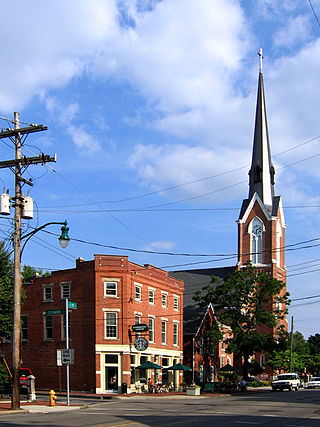
German Village is a historic neighborhood in Columbus, Ohio, just south of the city's downtown. It was settled in the early-to-mid-19th century by a large number of German immigrants, who at one time comprised as much as a third of the city's entire population. It became a city historic district in 1960 and was added to the National Register of Historic Places in 1974, becoming the list's largest privately funded preservation district, and in 2007, was made a Preserve America Community by the federal government. In 1980, its boundaries increased, and today it is one of the world's premier historic restorations.
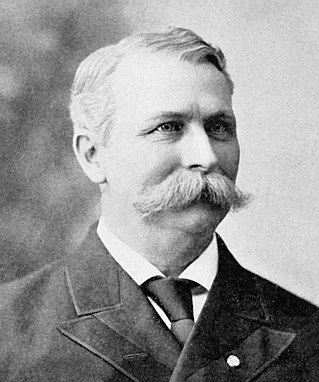
Asa Smith Bushnell I was an American Republican politician from Ohio. He served as the 40th governor of Ohio. Before becoming governor, he served as the president of the Warder, Bushnell and Glessner Company, one of four companies that would merge to form International Harvester. Other roles in business included serving as president of the Springfield Gas Company and the First National Bank of Springfield.
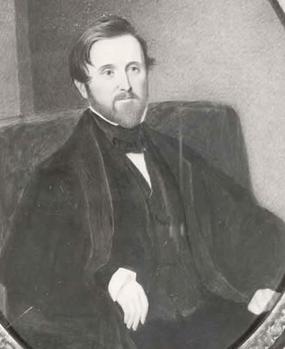
Alexander Jackson Davis was an American architect known particularly for his association with the Gothic Revival style.
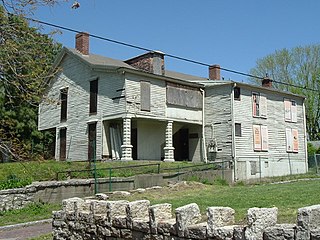
Portland is a historic district, neighborhood and former independent town northwest of downtown Louisville, Kentucky. It is situated along a bend of the Ohio River just below the Falls of the Ohio National Wildlife Conservation Area, where the river curves to the north and then to the south, thus placing Portland at the northern tip of urban Louisville. In its early days it was the largest of the six major settlements at the falls, the others being Shippingport and Louisville in Kentucky and New Albany, Clarksville, and Jeffersonville on the Indiana side. Its modern boundaries are the Ohio River along the northwest, north, and northeast, 10th Street at the far east, Market Street on the south, and the Shawnee Golf Course at the far west.

The Ulysses S. Grant Home in Galena, Illinois is the former home of Ulysses S. Grant, the Civil War general and later the 18th president of the United States. The home was designed by William Dennison and constructed in 1859 - 1860. The home was given to Grant by residents of Galena in 1865 as thanks for his war service, and has been maintained as a memorial to Grant since 1904.

The James D. Conrey House is a historic house located on an old intercity road in southeastern Butler County, Ohio, United States. Although the identification is unclear, it may have once been a tavern on the road, which connects Cincinnati and Columbus. A well-preserved piece of the road's built environment, it has been designated a historic site.
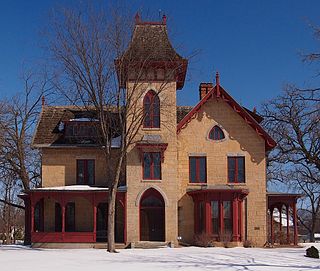
The William G. LeDuc House, also known as the LeDuc Historic Estate, located at 1629 Vermillion Street in Hastings, Minnesota, United States, is listed on the National Register of Historic Places. It was built over several years, and completed in 1865, by William Gates LeDuc who came to Minnesota in 1850 from Ohio. He was an attorney who represented a party to a suit involving Vermillion Falls, 1,500 feet (457 m) southeast of the homesite. As payment for his services, Le Duc received the land where he built his house. LeDuc was a Civil War veteran and U.S. Commissioner of Agriculture under President Hayes (1877–1881).

M/V Mississippi is a United States Army Corps of Engineers (USACE) towboat operating on the Mississippi River. It is the largest diesel towboat on the river.

The Price–Miller House is a historic home located in Hagerstown, Washington County, Maryland, United States. It is a 2+1⁄2-story, brick Neoclassical-style townhouse that rests on a high-cut stone foundation, and was built circa 1824–1825.

The William Lawrence House is a historic house in Bellefontaine, Ohio, United States. Located along Main Street north of the city's downtown, it is historically significant as the home of William Lawrence, a prominent U.S. Representative during the late nineteenth century.
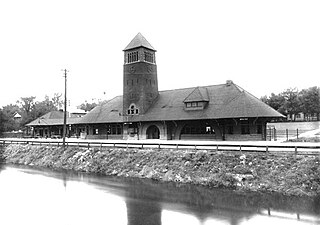
Rogers and MacFarlane was an architectural firm based in Detroit, Michigan, founded in 1885 by James S. Rogers and Walter MacFarlane. The firm produced commissions in Detroit and southern Michigan from 1885 until 1912.

The Fraser Mansion is a building at 1701 20th Street NW, at the intersection of Connecticut Avenue, 20th Street, and R Street in the Dupont Circle neighborhood of Washington, D.C. constructed in 1890 to be the George S. Fraser mansion, it served as his private residence for five years, a restaurant, a boarding house, the home of the new Founding Church of Scientology, and—currently—the location of Scientology's National Affairs office.

The Samuel H. Allen Home is a historic house located at 135 E. 200 North in Provo, Utah. It is listed on the National Register of Historic Places.
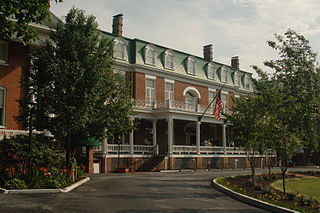
Abingdon Historic District is a national historic district located at Abingdon, Washington County, Virginia. The district encompasses 145 contributing buildings, 2 contributing site, and 13 contributing structures in the town of Abingdon. It includes a variety of residential, commercial, and institutional buildings dating from the late-18th century to the mid-20th century. Notable contributing resources include Sinking Spring Cemetery, William King High School (1913), General Francis Preston House (1832), Martha Washington Inn, Barter Theatre, the Virginia House, Alexander Findlay House (1827), Gabriel Stickley House, Ann Berry House, Washington County Courthouse (1868), Rev. Charles Cummings House, and James Fields House (1857). Located in the district and separately listed are the Abingdon Bank and Dr. William H. Pitts House.
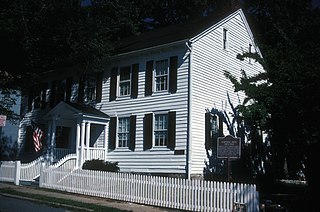
The Dr. Jabez Campfield House, also known as the Schuyler Hamilton House, is a historic, two-story, braced timber-frame colonial Georgian-style house and museum located at 5 Olyphant Place, Morristown, New Jersey.



















